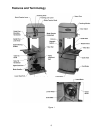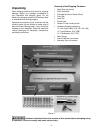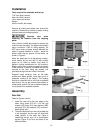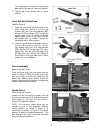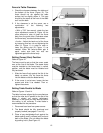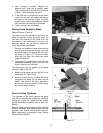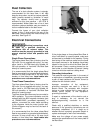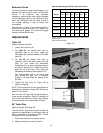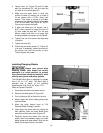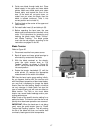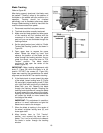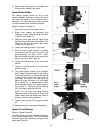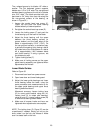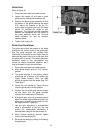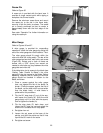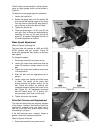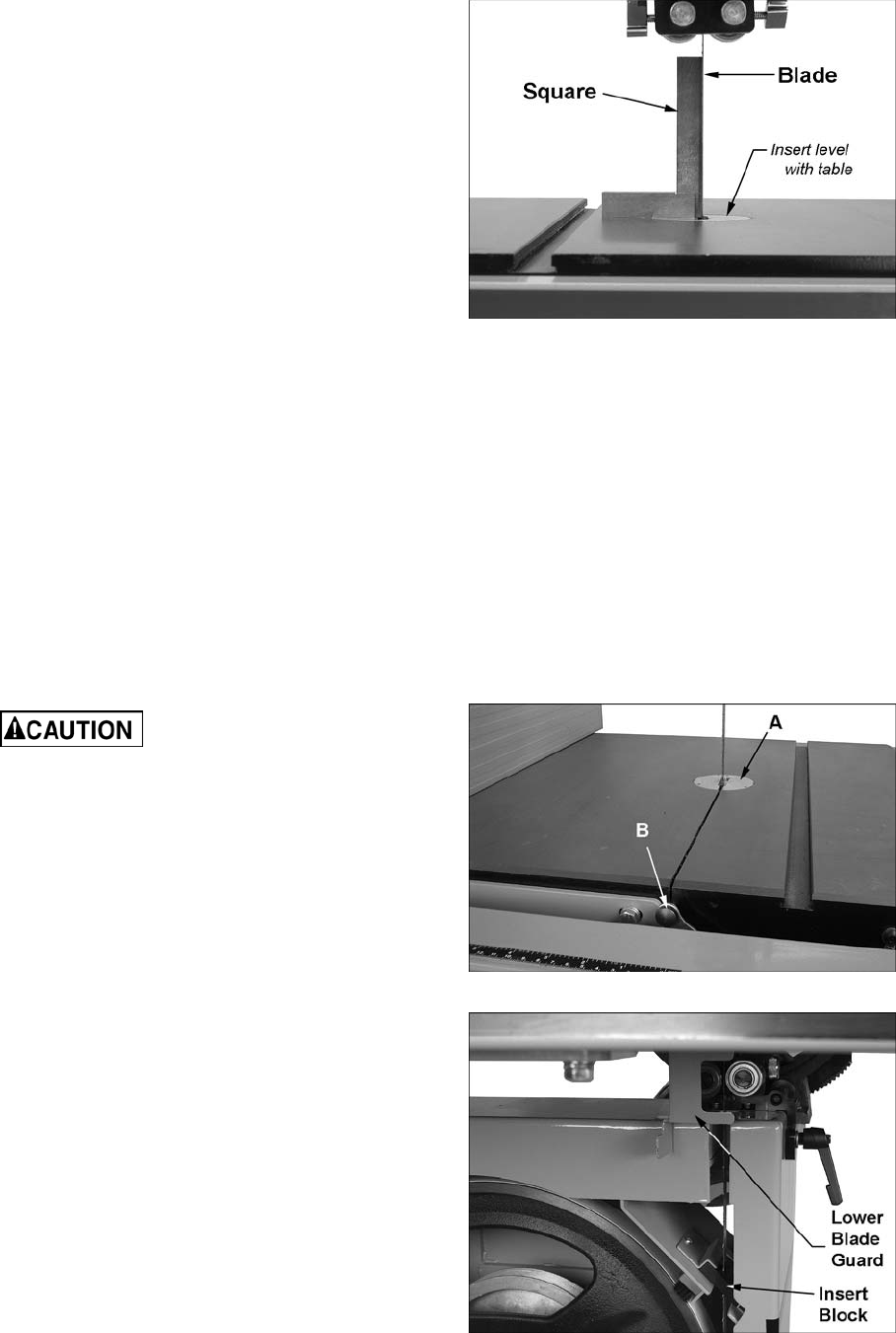
16
3. Loosen lever (A, Figure 20) and tilt table
with the handwheel (B), until the stop bolt
(C) rests on the circular plate (D).
4. Make sure the table insert is level with
surface of table by rotating one or more of
its set screws with a 5/164” (2mm) hex
wrench. Then place a square on the table
and against the blade to check that the table
is 90° to the blade. See Figure 22. NOTE:
Do not push square into blade.
5. If table and blade are not square, use a
9/16” (14mm) wrench to loosen the lock nut
(E) then rotate the stop bolt. Turn the stop
bolt as needed until there is no longer light
showing between the square and the blade.
6. Tighten lock nut (E) to secure the table stop
in position.
7. Tighten the lever (B).
8. Check that the scale pointer (F, Figure 20)
is at zero. If necessary, loosen the screw on
the pointer and shift the pointer to zero.
Then re-tighten the screw.
Installing/Changing Blades
Always wear gloves when
handling blades. New blades are usually
packaged in a coiled position; to prevent
injury uncoil them slowly and carefully, while
wearing work gloves and safety glasses.
The PM1800 Band Saw is designed for blades
from 1/16” to 1-1/2” wide. The Band Saw is
provided with a blade of the following
specifications: 0.03” thick, 3/4” wide, 4 TPI.
Refer to Figures 23 and 24.
1. Disconnect machine from power source.
2. Remove the table insert (A, Figure 23).
3. Pull out table pin (B) at the end of the slot.
4. Adjust upper and lower blade guides away
from the blade.
5. Move the quick tension lever to “Full
Release (Blade Change)” position.
6. Open upper and lower doors by rotating the
door catches. Open the lower blade guard
and slide out the insert block (Figure 24).
7. Carefully remove the blade from the top
wheel, then from between upper and lower
blade guides and lower wheel. Slide the old
blade out through the slot in the table.
Figure 22
Figure 23
Figure 24



